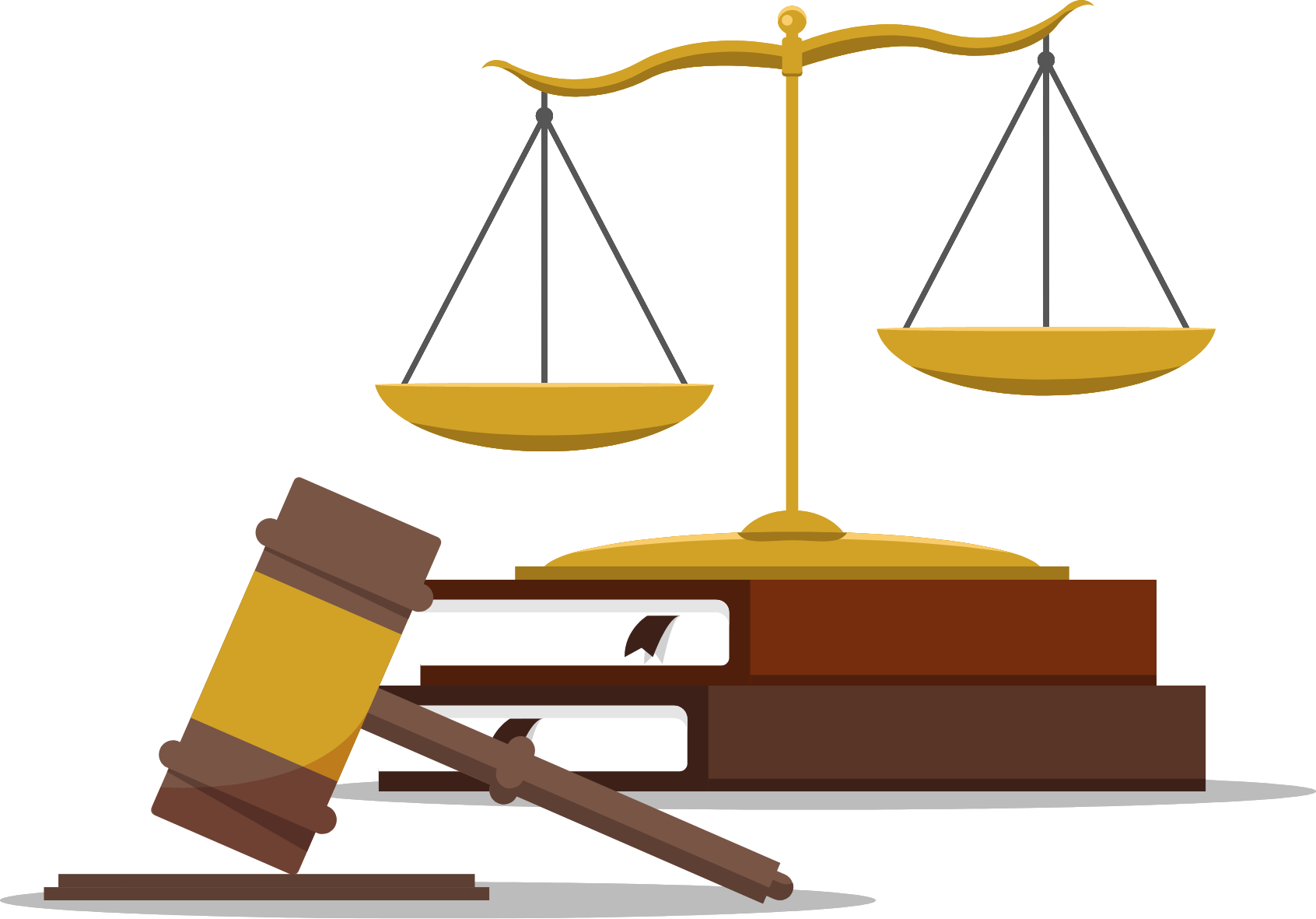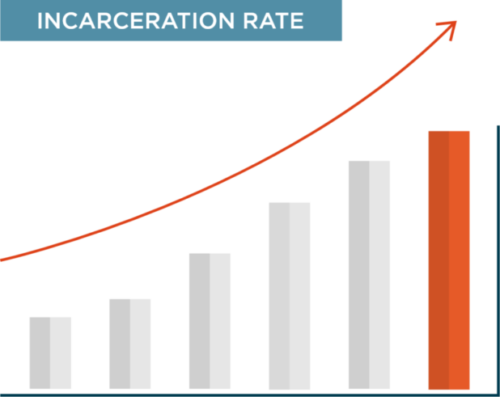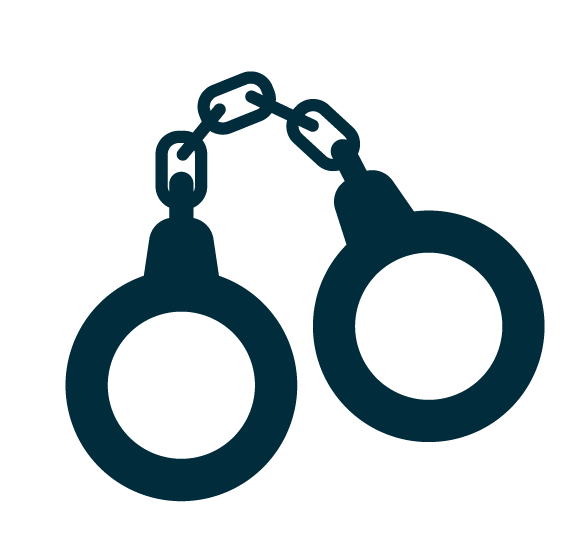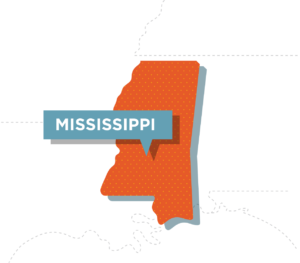A STATE-BASED REVIEW OF
Criminal Justice Systems

”
I pledge allegiance to the Flag of the United States of America, and to the Republic
PLEDGE OF ALLEGIANCE
Overview
From our founding forward, America has expressed a commitment to justice. Unfortunately, the system hasn’t always lived up to that aspiration. Poorly crafted policy has too often resulted in more people going to prison for more things and longer periods of time than anywhere else in the civilized world. Today, America has 5 percent of the world’s population, but nearly a quarter of its prison population. It comes at a heavy price to taxpayers, families and communities.

In recent years, policymakers around the country have taken a hard look at the criminal justice system and enacted “smart on crime” reforms based on best available evidence and data. The reforms aim to protect the public from real danger while safely reducing justice system interactions.
Grading Justice aims to comprehensively evaluate the laws and practices that define state justice systems—from policing and pre-trial process, to trial and sentencing, to parole and re-entry. It also aims to honestly assess the reforms that have been enacted and to provide insights into future reforms that could help states improve outcomes in their justice systems.

Issue Areas
PRETRIAL

Asset Forfeiture
Civil asset forfeiture laws allow state agencies to seize property from individuals if they suspect it was used in the commission of a crime. As opposed to criminal forfeiture, civil forfeiture allows for property to be forfeited whether or not the individual was actually convicted of a crime. In criminal cases, the burden of proof is on the state to prove beyond a reasonable doubt that someone committed a crime. Civil asset forfeiture allows for a person’s property to be taken based on suspicion, and the burden of proof is on the individual to prove their innocence. Forfeiture proceeds are often redirected to seizing agencies, creating an economic incentive for agencies to pursue forfeitures instead of solving crimes.

Good Samaritan Policies
The term “Good Samaritan” comes from a Bible story, where a traveling Samaritan stopped in the road to help a man who was injured after he had been passed by several others. As the opioid crisis has raged across America and drug overdoses have soared, states have looked for ways to decrease the number of fatalities from overdoses. Good Samaritan laws have emerged as a way to encourage reporting of overdoses by providing criminal immunity for those reporting the overdose. By shielding the individual reporting the overdose from prosecution for illegal drug use, Good Samaritan laws remove a powerful disincentive that can discourage individuals from seeking medical attention.

Body-Worn Camera Policies
At a time when trust is frayed between communities and law enforcement, body-worn cameras are a powerful tool that provide accountability and help build trust in the law enforcement process. While adoption of body cameras has grown significantly in recent years, most decisions regarding their use are made at the departmental level, creating a mishmash of policies that don’t always serve the public’s best interest. While policing is and should rightly be a local function, the state has a responsibility to ensure justice by setting standards for the use of body cameras.

Diversion Programs
As governments have grappled with ways to reduce incarceration and provide better outcomes for justice-involved people, diversion programs have emerged as a valuable tool. Diversion is premised on the idea that many people who end up in prison for issues related to poverty and addiction could have avoided this outcome with targeted interventions. Diversion provides these interventions by providing resources to meet an individual’s needs. In some cases, this might be drug treatment, in other cases it might be help writing a resume to get a job.

Pretrial Detention Policies
The idea that an individual is innocent until proven guilty is intrinsic to the American justice system. In the past, individuals were generally allowed to maintain their liberty until guilt was proven in a court of law. Pretrial detention was used only in extreme cases of direct danger or where the individual’s appearance at trial could not be assured. Bail evolved as a way to allow individuals to maintain their liberty while also ensuring that they showed up for trial. However, bail has evolved into an auxiliary system of punishment, where individuals charged with both serious and low-level offenses receive high bail amounts that make it all but certain they will be detained until their trial, which can take months or years. This leads to unjust outcomes, as research shows that individuals who are detained pretrial are more likely to plead guilty, regardless of their actual guilt.
SENTENCING

Problem-Solving Courts
Problem-solving courts include drug courts, mental health courts, parental accountability courts, and other judicial problem-solving programs that serve as an alternative to the traditional judicial process. Established in the 1990s, drug courts were the first problem-solving courts that emerged as an alternative for people dealing with addiction. These programs incorporate drug treatment programs with frequent meetings with court officers who coach and counsel participants throughout the process. The programs can last months or several years, and at their conclusion participants generally have their charges dropped or record expunged. By ensuring that problem-solving courts are available, states can reduce incarceration rates and provide better outcomes for justice-involved individuals.

Mandatory Minimum Sentences
Mandatory minimum sentences require that certain offenses receive a pre-determined minimum prison sentence. These sentences can lead to long prison terms for minor offenses. Mandatory minimum sentences prevent judges from exercising discretion and considering the facts of the case. These sentences tie the hands of judges and apply sentences that can be grossly disproportionate to the underlying conduct. In recent years, states have moved to eliminate mandatory minimums to allow for individualized sentences that restore the notion of a punishment that fits the crime.

Public Defense
The right to an adequate defense has been recognized as a constitutional guarantee by the United State Supreme Court, and while states are required to provide access to public counsel, the quality of that public defense varies widely between jurisdictions. States have a duty to ensure that this right is protected by establishing statewide standards and oversight of public defense to ensure that counsel is available at all stages of criminal proceedings, counsel is independent of undue influence by other system actors, and that they are properly resourced to provide an adequate defense for their clients.

Overcriminalization
As mass incarceration has taken its toll on states across the country, governments have looked for ways to decrease the harms caused to families and taxpayers by deprioritizing incarceration for drug offenses. States have decriminalized possession of controlled substances, instead directing individuals to treatment services. Defelonization moves drug offenses from the felony to misdemeanor level, reducing the harms that accompany a felony possession. States have also moved to eliminate drug enhancements. Enhancements are well-intended laws that impose additional prison time on drug offenses that take place near a school, church, or places children are likely to be. While the laws were intended to keep drugs away from children, they’re often overly broad and rarely used to actually target this intended activity.

Parole Eligibility & Earned Time Provisions
Parole and Earned Time provisions provide people who are currently incarcerated positive incentives to behave and improve themselves while in prison. They also empower parole boards and corrections officials to make evidence-based decisions that serve the interests of justice and protect taxpayers. Denying individuals the opportunity to be considered for parole or early release removes a powerful tool that can be used by corrections officials to maintain order and safety. Parole systems that provide broad eligibility and positive incentives for good behavior provide maximal benefit to taxpayers. These provisions must be structured in a way that allows system actors to exercise these powers effectively and grant parole as they see fit. Geriatric and medical parole provisions allow the state to provide compassionate release in extraordinary circumstances, allowing for individuals nearing end-of-life to maintain a measure of dignity while relieving taxpayers of the full burden of expensive end-of-life care.
REENTRY

Community Supervision
Originally created as an alternative to incarceration for lower-risk offenders and a way to provide additional supervision to higher-risk individuals leaving prison, probation began as an innovative tool to increase public safety, but has grown to become a common practice that, when used excessively, can actually undermine public safety. 30 Supervision can be a helpful tool when needed, but using it by default for every individual in the criminal justice system diminishes its effectiveness. Probation should be used primarily as an alternative to incarceration, and post-release supervision should prioritize success, not punishment and reincarceration.

Fines and Fees
Fines and fees often accompany criminal punishments as an additional deterrent to criminal behavior. The amount of fees and fines associated with a single criminal offense has increased substantially in recent years. Today, justice debt is used to supplement state appropriations to courts as well as municipal revenues. This undermined public trust in the justice system, and imposing large fees on indigent defendants who are unable to pay traps people in an endless cycle of debt and incarceration. Fines and fees can be used appropriately by ensuring that they can be adjusted to meet the means of individual defendants, including by use of payment plans and alternative payment options like community service. Incarceration for inability to pay should never be used as it not only violates an individual’s constitutional rights, it undermines the state’s ability to collect by paying to incarcerate and diminishing an individual’s employment prospects.

Freedom to Drive
The ability to drive is essential for many who travel by car to work. Licenses are routinely suspended for driving-related offenses, but during the “tough on crime” era of the 1990s, driver’s license suspensions emerged as an additional tool of punishment for offenses that are completely unrelated to driving. These provisions proved counterproductive, as the inability to drive forced many individuals into an impossible choice of whether to stay at home and lose their job or drive illegally to provide for their families. Reserving license suspensions for driving-related offenses ensures that punishments are proportional and individuals who haven’t abused the privilege of driving don’t lose their ability to travel.

Expungement and Record Sealing
Criminal convictions can have numerous negative impacts on individuals, even years after they’ve completed their prison sentence. Long after a person has “payed their debt to society.” Expungement and record-sealing policies allow people to clean up their records and have a conviction expunged or sealed. After a conviction is expunged, they’re not required to be disclosed on job applications, which can have positive impacts on an individual’s employment prospects. To provide maximal benefit, expungement provisions should apply to a broad range of nonviolent offense types. Waiting periods should be short to ensure that expungements are helpful while an individual is attempting to rebuild their life post-incarceration. The process should also be simple to encourage widespread usage.

Right to Earn a Living
Occupational licensing has proliferated in recent years, with more and more jobs requiring a professional license from the state before an individual can work in their chosen field. Many licensed occupations prevent individuals with criminal records from seeking a license to work. While certain convictions that are directly related to certain professions could prove disqualifying, blanket restrictions on anyone with a criminal conviction pose undue hardships on individuals seeking to reenter the workforce after completing their sentence. States can revise these restrictions to ensure that individuals are not denied an occupational license for old, unrelated convictions.
FAQs
Grading Justice is divided into three sections, ordered chronologically according to an individual’s journey through the criminal justice system: Pretrial, Sentencing, and Reentry. Each section examines the most important policy issues within that stage of the process. Each issue area includes a brief overview of the issue, including evidence-based policy reforms for that issue area based on best practices identified by research and adopted by other states. Each state's policies in this area are then described and scored based on how closely they mirror the best practices in this area.
Graded policy issues were selected based on their impacts on incarceration rates, public safety, individual liberties, and an individual's ability to earn a living.
Grading Justice scores 15 policy issues across three areas of criminal justice policy: Pretrial, Sentencing, and Reentry.
Pretrial
- Civil Asset Forfeiture
- Good Samaritan Policies
- Body-Worn Camera Policies
- Diversion Programs
- Pretrial Detention Policies
Sentencing
- Problem-Solving Courts
- Mandatory Minimum Sentences
- Public Defense
- Reducing Criminalization and Incarceration for Drug Offenses
- Parole Eligibility & Earned Time Provisions
Reentry
- Community Supervision
- Fees and Fines
- Freedom to Drive
- Expungement and Record Sealing
- Right to Earn a Living
The letter grades in each area highlight the progress that awaits each state. Policymakers around the country have worked to pass a number of important reforms, and those should be celebrated. These policy accomplishments are highlighted here, but they must be considered in the context of what’s required to ensure a system that is just. It is our hope that this analysis encourages state leaders to continue their work in this area, promoting justice for all.
Letter grades are assigned in each policy area based on the numerical scored awarded in that area, according to the scale below:
- A: 90 - 100
- B: 70 - 89
- C: 50 - 69
- D: 30 - 49
- F: 0 - 29
Within each policy issue scored, sub-areas define the components of ideal policy reforms. Available points in each sub-area are determined according to the relative impact of reforms in that sub-area. Points are awarded based on how well the state's policies reflect ideal reforms in each sub-area.

